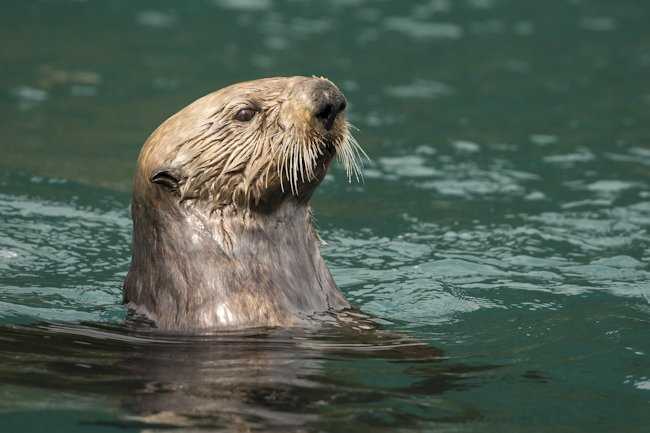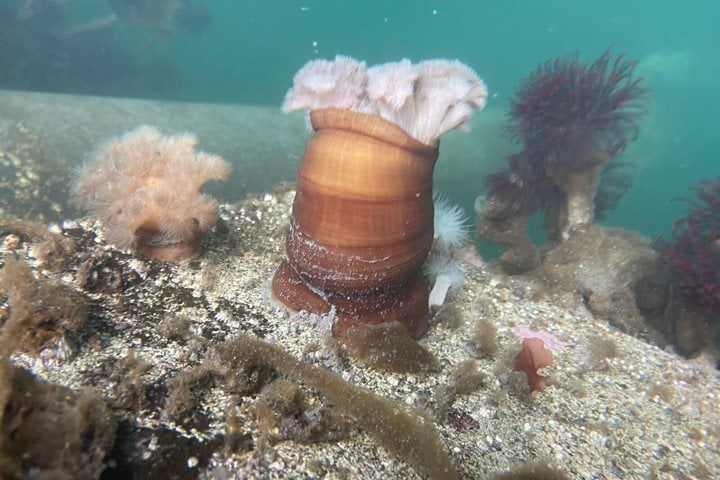For some of us, a foggy morning at sea is simply magical; the outside world seems to be just a distant memory or last night’s dream; isolated by a white curtain 360 degrees around us, politics, problems, and wars disappear. Such a scenario greeted us this morning as we sailed around the northern shore of Chichagof Island towards the Inian Islands; the National Geographic Sea Bird reached her anchorage at the Hobbit Hole shortly before breakfast just when the fog started to lift and the forested mountains around us looked so much like a wonderful postcard. The tops of the trees sticking out of the white, looking like ghostly figures made for a very dramatic landscape.
After a great breakfast we explored the Inians using our expedition landing craft and got the chance to watch a great variety of wildlife. The Inians is a small archipelago located between Chichagof Island and the southern part of the Fairweather range in the mainland that separated Cross Sound on the west and Icy Strait on the East; they also act as a bottleneck for the huge volume of water that flow between the open Gulf of Alaska and the northern portion of the Inside Passage. The strong tidal currents speed-up and flows up as they encounter sea mounts other obstacles in the bottom, stirring the waters and bringing a lot of fish and other creatures close to the surface, where huge Steller’s sea lions, bald eagles, and a multitude of marine birds can capture them. The proximity of the open Gulf makes for a more dynamic environment in terms of wave action and the abundance of kelp forests provide a safe haven for a number of smaller creatures like sea otters that like to wrap themselves around the long kelp blades as they rest on the surface. Almost whipped down by the Russians and the Aleut native hunters brought here by the former, sea otters are now abundant once again and their presence help to maintain a natural balance on benthic invertebrates like sea urchins, basket stars, although commercial fishermen dislike them because they also prey on highly appreciated species like Dungeness crab and clams. Oh well, they arrived here before we did.
During lunch we repositioned a short distance towards a gorgeous protected bay called Port Althorp on the northern portion of Chichagof Island. We possibly anchored near the site where George Vancouver did for 18 days during July, 1794, when he explored the region. Now only visited by the local residents of Elfin Cove, a small fishing community nearby and a few other adventurous people like us, Port Althorp is the only no-hunting area protecting brown bears in Chichagof. We explored it by kayak and on foot, admiring its solitude and wildness. The salmon stream at the end of the bay had a run of pink salmon and showed recent evidence of many bears feasting. Bald eagles, ravens, and gulls dotted the shorelines as they waited patiently for some more scraps and leftovers from bruin. What a wonderful place of true Alaskan wildness!









